Magnificent Obsessions
PERSOL MAGNIFICENT OBSESSIONS: 30 stories of craftsmanship in film is the first in a series of three annual exhibitions presented by the legendary Italian eyewear brand, celebrating the stories of obsessive craftsmanship behind some of cinema’s most iconic onscreen moments. The exhibition runs June 17-19, 2011, at Centre 548, 4th floor, 548 West 22nd Street, New York. Each year Persol will be celebrating 10 stories of fierce passion, painstaking research, and meticulous attention to detail, in this series of exhibitions curated by film and contemporary art specialist Michael Connor. The first exhibition features behind-the-scenes research notes, sketches, videos, interviews, and materials used in the development process for films including Martin Scorsese's Taxi Driver, Wes Anderson's The Darjeeling Limited, Sofia Coppola's Marie Antoinette, and more. The following article, adapted from the exhibition catalogue, recounts Terry Gilliam's creation of a timeless dystopian vision in Brazil and his dogged battle with the film's U.S. studio to see its release and preserve its less-than-audience-friendly ending.
With Brazil (1985), director Terry Gilliam created a darkly humorous world of bureaucracy run amok, a remarkably powerful vision that has profoundly influenced more than a generation of filmmakers. Gilliam's achievement is twofold: first, in bringing its oneiric scenes to vivid life, and second, in fighting to preserve his vision in the face of stiff opposition from the studio.
I recall first reading about Gilliam's conflict with Universal as a film studies undergraduate, and feeling inspired by his determination to remain true to his vision; it's a real honor to include his work in PERSOL MAGNIFICENT OBSESSIONS. The following texts are taken from an interview with Gilliam conducted by his daughter Holly, who co-curated this section of the exhibition. —Michael Connor
A Collection of Frustrations
Brazil was really a collection of frustrations and growing anger about the way the world was. As inspiration, I spent quite a long time gathering information from my stint in advertising—the only corporate job I've ever had. At the time there were a lot of terrorist activities, such as planes being hijacked. Governments were cracking down on so-called terrorists. In Germany, professors and people in positions of authority were being asked to sign loyalty oaths. In South America, people were being detained and having to pay for the detention while in prison. There were a lot of things in the world that were frustrating me, making me angry, and Brazil was my attempt at a catharsis; to clear these things out of my system before I started making and throwing bombs.
When I was originally working on this project, I didn't know what to call it. At one point we were going to call it 1984 ½. Even though I hadn't actually read George Orwell's book, I kind of knew it, it was out there in the ether. Also I was a huge fan of Fellini, and 8 ½ was one of the most important films to me. So I thought 1984 plus 8 ½...1984 ½.
In the end I was thinking more about music and the song Brazil, which I've always loved. I was on a beach at Port Talbot in Wales one day when we were looking for locations. It's a beach completely covered in coal dust because of the great factories there. The coal is delivered by ship and transported on conveyor belts across the beach to the factories, and the dust blows off and covers everything. It was a grim day and probably one of the most monochromatic, miserable places I've ever been.
I was sitting on this blackened beach and I started thinking about somebody sitting there trying to escape from that world, looking out across this ugly sea. He has this little portable radio and suddenly on this portable radio, you hear "Da dum, da da da da dum"—beautiful music from "Brazil," and I thought, "Ahh...we will call the film Brazil, because that's where he wants to escape to, even though we never show the place."
One thing that's always made me crazy is bureaucracy in any form. We need order sometimes in the world but we don't need to make it so miserable for most people. And so Brazil was very much about a bureaucracy gone mad: The Ministry of Information. Interestingly enough, it applies very much to the world we're living in now.
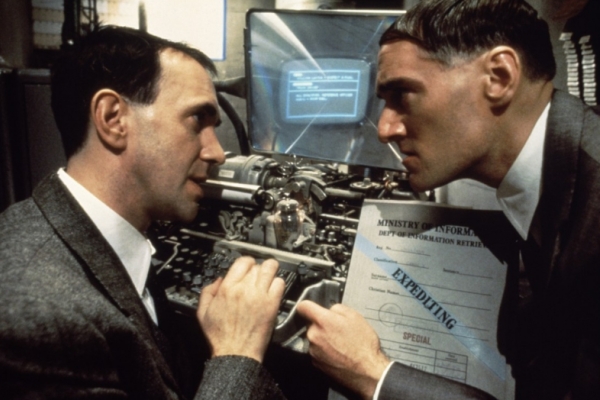
The Totalitarian Aesthetic
The look of the film is an interesting collage of influences I think. I've always liked 1930s architecture, which tends towards the totalitarian, towards fascist imagery, but it looks great, it's fantastic. German Expressionist film I've always loved—shadows, angles. I'm interested in technology that doesn't quite work.
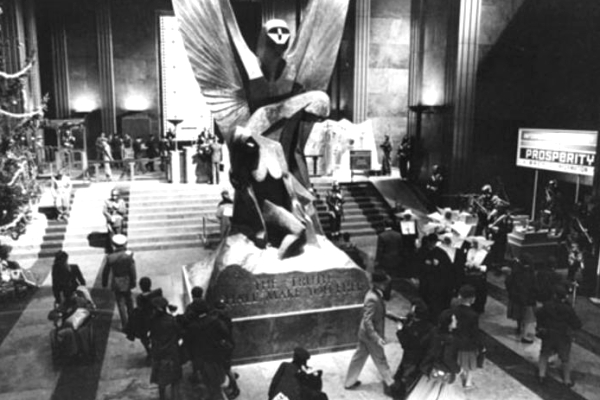
We created a retro-style future that incorporated everything in 20th century technology and design, so the film takes place throughout the 20th century, at any point, incorporating the future and the past.
Sam's apartment is very sleek, very modern. Everything is tucked behind the wall panels, but if you rip them open, the guts hang out. It's almost human, almost organic, the amount of stuff hidden behind that smooth exterior.
And that was because, as you find in our modern world, none of us know how things work, we accept it, we think oh, behind the walls everything is functioning, we never have to look. It's a mess back there. I think I was originally inspired by the Pompidou Centre in Paris where they put the inside on the outside.
There are lots of posters all through the film. They're there for a variety of reasons, because they offer glimpses into other sides of the world: there are some posters that offer luxury holidays on secure boats in the middle of nowhere, safe from terrorism; others are encouraging you to be a good citizen. We started using the old wartime slogans, like "Loose Lips Sink Ships." We've got "Don't Suspect a Friend, Report Him." Give them to the authorities, trust them to sort it out, anything suspicious about your friend, anything you don't like.
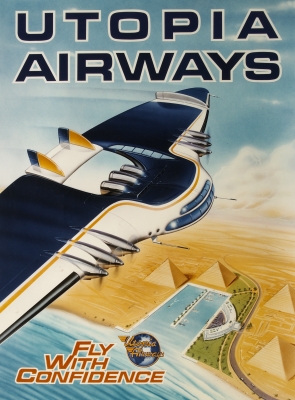
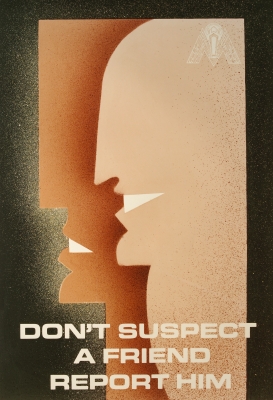
"Trust in Haste, Regret at Leisure"—these are encouraging people to be paranoid, to be uncertain. You don't have to look to our posters anymore for advice, listen to Homeland Security—they're trying to tell you the same things our posters were trying to tell you then.
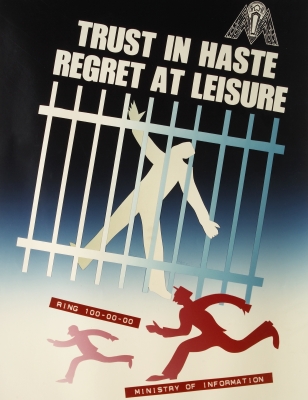
Dreamscape
When we move into Sam's dreamscape, it's just the opposite of the world he lives in. It's a world of beautiful clouds, great vistas, skies...but his dreamscape is always being interrupted by nightmarish images. Out of the ground of this beautiful landscape erupt huge black towers, monolithic brick towers, faceless things that are just destroying the landscape.

When the world is interrupted by these monoliths, suddenly the world goes dark. It becomes a labyrinth of corridors and streets that seem to go nowhere and everywhere. In the labyrinth are what we call the forces of darkness, Sam's nightmare images, including baby face creatures, which are the real force of darkness.
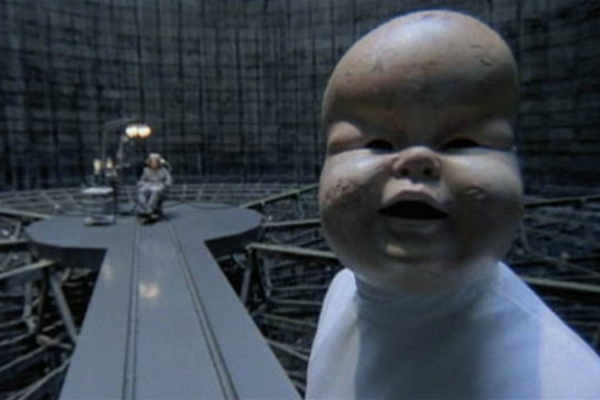
These baby faces always intrigued me. I'd seen a rotting doll's head lying in a little trolley in my parents' back garden. I don't know why, it just stuck with me. For some reason I had a picture of this, and we modeled the baby faces on it, except we blended the doll's head with a Buddha face. You had this mixture of something that was almost benign, combined with something that's evil and rotting at the same time.
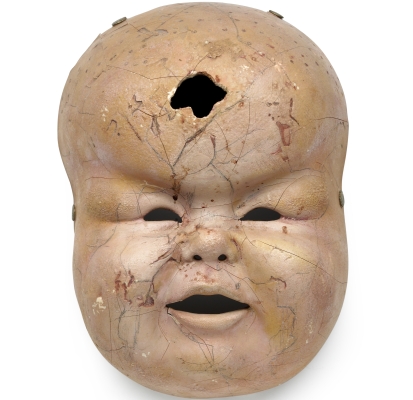
Battling the Studio
After nine months—I'll repeat that, nine months—of work, we finished the shoot, and spent six months more on the editing. We got the film together and started showing it to public audiences, and half the audience would invariably walk out. It was clear that this was not going to be a popular movie. It made people think about the society that they lived in, and a lot of people don't want to do that.
When we had what I thought was the final cut and were very happy with it, the film was released in Europe—20th Century Fox had it for the rest of the world while Universal had it for North America, where it did reasonable business. We had fantastic reviews from the French critics in particular, which gave us confidence that we had made an interesting film.
At this point, Universal decided that the film was unreleasable, that nobody would ever go and see it, it didn't make sense, it was a disaster, and they then said, "We will not release the film." I was encouraged by Mr. Sid Sheinberg and others within the Hollywood system to change the story somewhat. Why do we need this dark ending? Why can't we have a happy ending? It would get more people into the cinema, more people to enjoy the experience.
I said, unfortunately, this is the story we set out to make. People like Robert De Niro and Jonathan Pryce agreed to be in this movie because of the story that we're telling, and we don't change the story for the sake of a larger audience. This is a concept not easily understood in the higher offices of Hollywood, so we were at a stalemate: the studio was busy trying to cut their version of the film, and they'd taken out an embargo on us showing the film in America. So I had to do something.
I took out an ad in the pages of Variety magazine, the show business bible...a full-page ad! A blank full page surrounded by a black border as they do in funeral announcements in places like Italy. In the middle of this vast white space in Variety was a personal message: "Dear Sid Sheinberg—when are you going to release my film Brazil? Terry Gilliam."
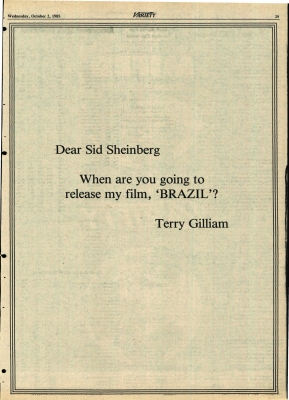
Journalists found this an interesting story. Nobody had ever done this before. One particular journalist for the Los Angeles Times, Jack Mathews, began a dialogue between me and Sid Sheinberg. After our initial meetings, Sid and I never spoke. I would quote something to Jack, he would then go to Sid, Sid would then respond to that, and this dialogue was then repeated on the pages of the Los Angeles Times. This was good reading: David versus Goliath, the little artist against the corporate system, a perfect story for the journos. And on it went, this dialogue between Sid and myself, the film being unable to be seen in America. BUT...
Luckily there was one journalist who had seen the film in Paris who wrote a rather nice article about it, which intrigued other journalists. Then we discovered that a few friends in the Los Angeles Film Critics Association started showing the film in private cinemas in people's homes, so it had gone underground at this point.
Then it came time for the release of Out of Africa, Universal's biggest picture of the year. They'd spent all of their money on that one—Robert Redford, Meryl Streep. Everybody gathered in New York for a black tie premiere, and lo and behold, the press that day revealed something interesting: the Los Angeles Film Critics Assocation had voted Brazil best picture, best screenplay, and best director, without the film having been released. They had discovered that nothing in their bylaws said that the film actually had to be released. As long as it was made, they could vote on it. Very embarrassing for the boys at Universal, especially on such an important night.
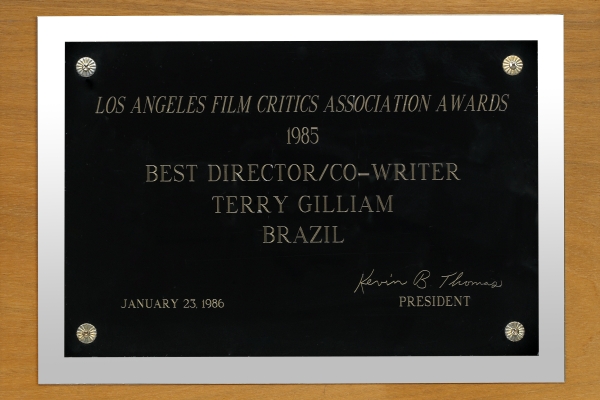
I'd say the shit hit the fan at that point. They suddenly had a problem. The heads of the studio—all of the major heads—had all described the film as unreleasable, unwatchable, and now it had been voted top of the heap, the best film of the year.
"That is what we call an obsession, and we won"
They rushed out a release of the film. It went out to New York and Los Angeles without a poster. The film made more money per seat than any other film over Christmas; the studio thought maybe they'd made a mistake, maybe they had a hit on their hands, and then dutifully released it all over the country in little towns that had never heard of this battle. So a film called Brazil turned up in Lick-Spit, Ohio, and why would anybody want to go and see a documentary about a South American country? And they didn't!
There's one little sidestep in this story of getting the film released. We got on ABC television because Bobby De Niro agreed to come on the show. Now Bobby never does publicity for his movies and this was a coup for Good Morning America, and so Bobby and myself went on to the show. Maria Shriver, very nice lady, was interviewing Bobby and eventually she turned to me and said, "Well Terry, I understand you have a problem with this studio." And I said, "Moi, I don't have a problem with this studio, I have a problem with one man, his name is Sid Sheinberg, and he looks like this—" and I pulled out an 8-by-10 glossy of Sid and held it up to the camera, so millions of Americans could see the man that was stopping my film being shown.
Getting the film released was the only important thing. It didn't matter how it was released as long as it was out there for the public to find it in their own good time. That is what we call an obsession, and we won.
Love. Conquers. All.
The great thing about a major corporation is that they don't give up easily. We got our version of Brazil out, uncut, untouched, the way those of us who worked long and hard on it wanted it to be. But it turned out the studio had their version, and eventually they got their version out. Strangely enough, I didn't care because it went out on syndicated television and every five minutes, there's a commercial break. I thought, why not let their film be ruined and not mine?
It's considerably shorter, and what they thought the film was really about was Love. Conquers. All. They cut out a lot of those messy fantasy sequences, they cut out a lot of the nastier elements, and they found a happy ending in our outtakes. We did have a happy ending, which had Sam there in his torture chair dreaming of that happy ending. They removed the torture chair, and found a few more shots to give our film—or, let's be honest, their film—a truly happy ending. I think anybody who had to sit there through that syndicated version with commercials every five minutes deserved the happy ending that Universal so kindly and graciously provided. ![]()
LATEST ARTICLES
-20140814-173707-thumb3.jpg)
Fighting Words
by Imogen Sara Smith
posted August 12, 2014

Fighting Words, Part 2
by Imogen Sara Smith
posted August 20, 2014

On the Margins: The Fil…
by Andrew Chan
posted August 12, 2014

Robin Williams: A Sense…
by David Schwartz
posted August 12, 2014
 Magnificent Obsessions
Magnificent Obsessions
KEYWORDS
Persol Magnificent Obsessions | Museum of the Moving Image | Brazil | Terry Gilliam | Hollywood | distribution | director’s cutFURTHER RESEARCH
Pinewood Dialogue with Terry Gilliam January 6, 1996Pinewood Dialogue with Terry Gilliam October 2, 2006
Pinewood Dialogue with Terry Gilliam December 8, 2009
THE AUTHOR
Holly Dubois Gilliam, the younger daughter of Terry Gilliam, is a film lawyer for high-profile clients including major and mini Hollywood studios and select independent production companies. Prior to her career in law, she worked in film PR and production. Outside of her legal work, she is currently co-producing a feature-length animation movie as well as developing a retrospective book and exhibition of her father's life work.
Michael Connor is a curator specializing in cinema and its relationship to contemporary art. He co-curated 'Essential Cinema', the opening exhibition of the TIFF Bell Lightbox and the permanent exhibition 'Screen Worlds' at ACMI in Melbourne, Australia. From 2005 to 2007, he was Head of Exhibitions at the British Film Institute.
More articles by Holly Gilliam and Michael Connor

